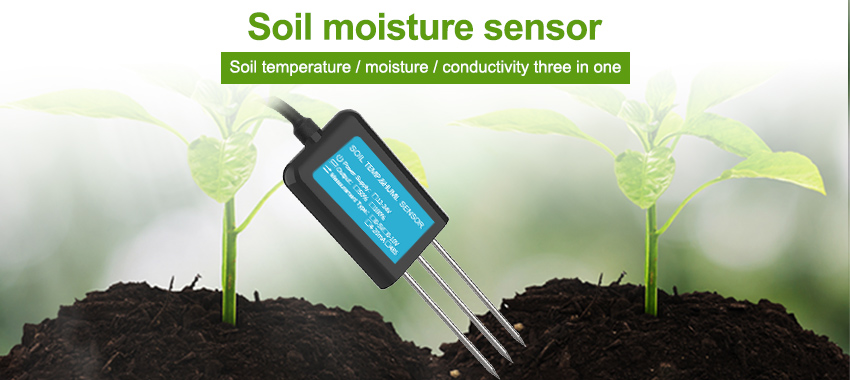Soil plays a crucial role in various aspects of our lives, from agriculture and food production to environmental sustainability. Understanding the soil’s characteristics and conditions is essential for optimizing crop yield, conserving water resources, and promoting sustainable land management practices. Soil sensors have emerged as powerful tools that enable us to unlock the secrets of soil by providing real-time data on moisture levels, nutrient content, temperature, and other important parameters. This article explores the significance of soil sensors, their applications, and the benefits they bring to soil management and agricultural practices.

The Importance of Soil:
Soil is a complex ecosystem that supports plant growth, regulates water cycles, and provides essential nutrients for crops. It serves as a vital medium for root development, nutrient uptake, and microbial activity. Understanding soil properties and dynamics allows farmers, agronomists, and environmental scientists to make informed decisions regarding irrigation, fertilization, and land management practices.
The Role of Soil Sensors:
Soil sensors are innovative devices designed to measure and monitor various soil parameters accurately. These sensors utilize advanced technologies such as capacitance, time-domain reflectometry (TDR), electrical resistance, and optical sensing to collect data on soil moisture, temperature, salinity, nutrients, and more. The data collected by soil sensors enables precise and targeted interventions, leading to improved crop productivity, water conservation, and environmental sustainability.
Applications of Soil Sensors:
3.1. Irrigation Management:
One of the fundamental uses of soil sensors is in irrigation management. By continuously monitoring soil moisture levels, sensors provide real-time information on whether plants are receiving an adequate water supply. This enables farmers to optimize irrigation schedules, prevent overwatering or underwatering, maximize water-use efficiency, and reduce water wastage.
3.2. Nutrient Management:
Soil sensors also play a significant role in nutrient management. They can measure the concentration of essential nutrients such as nitrogen, phosphorus, and potassium in the soil. This information helps farmers apply fertilizers more precisely, reducing the risk of nutrient leaching and minimizing environmental pollution. By optimizing nutrient application, farmers can improve crop quality, reduce input costs, and enhance sustainability.
3.3. Soil Health Monitoring:
Soil sensors provide invaluable insights into soil health by assessing parameters such as organic matter content, pH levels, and compaction. Monitoring these indicators allows farmers to identify potential issues early on and take corrective actions to maintain soil fertility and structure. Healthy soils promote beneficial microbial activity, nutrient cycling, and root development, leading to thriving crops and long-term sustainability.
3.4. Precision Agriculture:
Soil sensors are an integral part of precision agriculture, a farming approach that leverages technology to optimize resource utilization and increase productivity. By combining data from soil sensors with satellite imagery, weather information, and other data sources, farmers can create detailed soil maps and fine-tune their management practices. This targeted approach enables site-specific applications of inputs, reducing waste, and maximizing yields.

Benefits of Soil Sensors:
4.1. Data-Driven Decision Making:
Soil sensors provide real-time, high-resolution data, empowering farmers and agronomists to make data-driven decisions. By incorporating soil sensor data into their decision-making processes, farmers can optimize irrigation, fertilization, and other practices based on accurate information, resulting in improved resource management and increased profitability.
4.2. Cost and Resource Savings:
Utilizing soil sensors allows for precise management of irrigation and fertilization, reducing water and fertilizer usage. By avoiding over-application and ensuring nutrients are available when needed, farmers can save costs and conserve valuable resources. This not only benefits their bottom line but also reduces the environmental impact associated with excess nutrient runoff and water wastage.
4.3. Sustainability and Environmental Stewardship:
Soil sensors facilitate sustainable farming practices by promoting optimal resource utilization, reducing waste, and minimizing environmental impacts. By providing real-time feedback on soil conditions, farmers can implement precise interventions, prevent soil degradation, and contribute to long-term soil health and ecosystem preservation.
4.4. Increased Crop Productivity and Quality:
By fine-tuning management practices based on soil sensor data, farmers can optimize crop yields and enhance product quality. Accurate monitoring of soil moisture and nutrient levels ensures that crops receive the necessary inputs at
